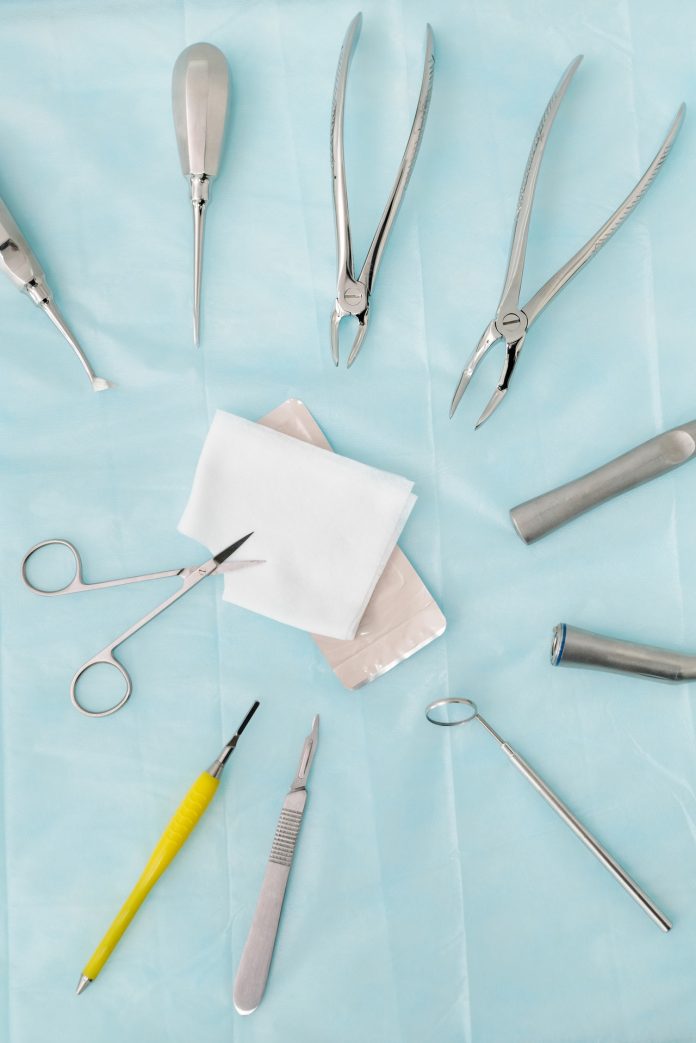Good quality handheld surgical instruments enhance the performance of the surgical team. The surgeons should feel extremely comfortable and confident using them as a seamless extension of their hands. Conversely, if the dental surgical instruments are of low quality, the functional ability of the surgeons can reduce drastically. In this article, we have sourced five factors that determine the efficiency of surgical instruments but initially go through the
Classification of the Surgical Instrument:
Surgical Instruments are classified into the following four broad categories.
Cutting/Dissecting:
Cutting Instruments have sharp ends that help in dissecting through the skin, tissue, and suture material. These instruments have either double or single sharp ends. The dissecting instrument needs regular re-sharpening.
Clamping/Occluding:
Their function is to compress the blood vessels or hollow organs during a surgical procedure. The instrument’s handles clamp on the hollow organs and stay there until the surgeon decides otherwise.
Grasping/ Holding:
These instruments grasp the blood vessels or soft tissues that hinder the surgical procedure. After some use, the surgical tools can lose their grasping abilities. Therefore, the technical staff must keep the joints lubricated and must replace them when required.
Retracting/ Exposing:
The grasping instruments are used to retract the organs to access the surgical site for the surgeon. Usually, such an instrument retracts skin, ribs, and other tissues and separates the edges of the incision. There are two types of retracting instruments; one is self-retaining, while the other is handheld.
Read through the five factors that determine the efficiency of surgical instruments.
Also read: https://learnloftblog.com/health/dentist-for-dental-health/
Material:
Material selection can directly impact the efficiency of the surgical instruments. The choice of metal such as stainless steel, titanium, and tungsten carbide inserts can enhance the instruments’ functional ability and shelf life. Different materials have different properties and can impact the functioning and handling of surgical tools. Ideally, the metal should be:
- Malleable
- Withstand high temperature.
- Wear and Tear resistant
- Corrosion-Free
- Biocompatible
- Non-magnetic.
- Ergonomic Design
Level of Precision:
The precision determines the functional ability of the surgical instrument. The ergonomic design of the instrument is engineered after extensive calculations by scientists and surgeons. The sharpness of the tip also plays an important role in the overall efficiency of the instrument. In fact, due to the increasing precision of the instruments, many traumatic surgeries are converted into less invasive ones.
Quality Grade:
The instruments are graded based on craftsmanship and metal quality. There are three types of quality grades in the surgical instrument:
● Premium-Grade Instruments
The Premium instruments are manufactured from 400-series stainless steel. The HQ finish of these instruments does not allow rusting and keeps them sturdy for a longer span.
● Mid-grade instruments
The mid-grade instruments are considered lower than the premium-grade ones and can be purchased in a lesser price range. In addition, the manufacturer uses 400-series stainless steel in creating these instruments that rust and corrode easily.
● Economy-Grade instruments
With a shiny finish and cheaper price range, the economy-grade instruments are not considered reliable resources. In addition, the replacement and repairing cost exceeds the purchasing cost of economy-grade equipment; therefore, it is highly suggested that you should get your hands on premium equipment.
Hand Factor:
Designing becomes a hassle due to differences in human hand sizes. Therefore, a highly efficient instrument should provide excellent dexterity, control, and precision to the user with any hand size. The instrument should also be versatile in terms of the age factor of the user.
Cost:
Saving money goes out of the picture when it comes to purchasing cutting-edge oral surgery instruments for your medical practice. Usually, the manufacturers suggest a price based on multiple factors such as dexterity, design, ergonomic detailing, precision, size, and control. Therefore, purchase the high-end product that is rather pricey than the cheaper ones.
Conclusion
The highly efficient surgical instrument makes a lot of difference when it comes to surgeries. However, multiple aspects altogether define the efficiency and accuracy of the surgical equipment, such a hand factor, quality grade, cost, and many more. Therefore, it is highly advised to purchase good quality instrumentation to avoid the cost of repairing and replacing.





